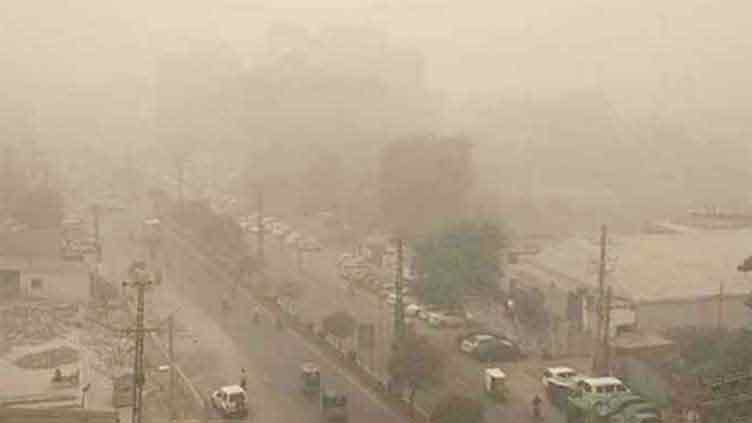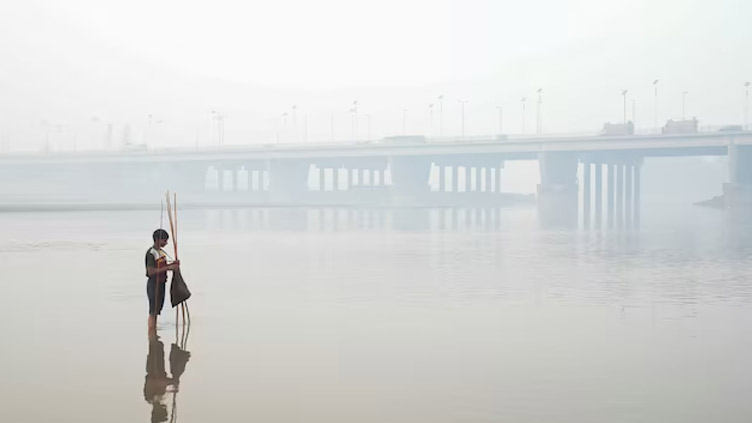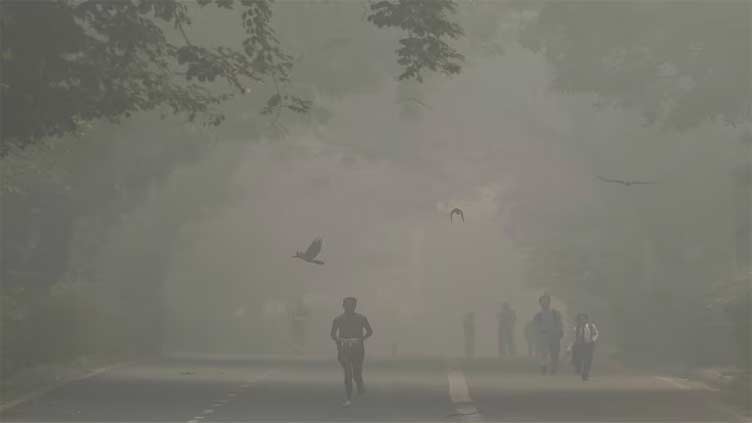Smog - A Ticking Time Bomb

Pakistan
Smog has reached alarming levels and is severely affecting the quality of life in Punjab
By M. Zaeem Saqib
Punjab - the cultural and economic heart of Pakistan - has long struggled with air pollution.
In recent years, the province, especially central Punjab, has been gripped by a more dangerous phenomenon: smog.
This thick blanket of pollution, which typically forms during the winter months, has become a major health crisis, particularly for vulnerable populations such as children, the elderly, and those with pre-existing respiratory conditions.
Smog has reached alarming levels and is severely affecting the quality of life in Punjab, especially in Lahore, posing a serious threat to public health.
Smog is a toxic mixture of smoke, fog, and pollutants that form when air quality worsens. This phenomenon is primarily caused by a combination of vehicular emissions, industrial pollution, crop burning, kiln emissions and weather conditions that trap pollutants in the air.
The impact of smog is far-reaching, leading to respiratory problems, heart disease, and exacerbating existing conditions such as asthma, bronchitis, and other chronic lung diseases.
Children are especially vulnerable to smog. Their immune systems are still developing, and their lungs are more sensitive to the harmful effects of air pollution. Exposure to smog can lead to coughing, wheezing, and even long-term respiratory damage.
Schools often remain closed when the smog reaches hazardous levels as it becomes difficult for children to breathe and concentrate.
For patients with pre-existing conditions, such as asthma and cardiovascular diseases, smog poses a serious risk. The fine particulate matter (PM2.5) in the smog can trigger asthma attacks, heart attacks, and strokes, and it significantly reduces life expectancy over time.
Also Read: Lahore most polluted city, motorways closed as smog descends on Punjab
Vehicular Emissions: Lahore’s traffic is notorious for its congestion, with thousands of vehicles emitting harmful pollutants like carbon monoxide, nitrogen oxides, and particulate matter.
These pollutants, combined with a lack of proper vehicle maintenance and older models, exacerbate the smog problem.
Industrial Emissions: The city is home to numerous factories and industrial units, many of which operate with little regard for environmental regulations. The burning of fossil fuels and the release of industrial waste into the air contribute significantly to the air pollution that leads to smog.
Crop Burning: During the harvest season, farmers in the surrounding agricultural areas burn crop residues, particularly rice stubble, to clear fields. This practice releases large amounts of smoke and particulate matter into the atmosphere, which then drifts into Lahore, worsening the smog.

Brick kiln emissions are most contributing factors. The kiln smoke comes out like blast and damages the air quality in no time.
Weather Conditions: During the winter months, cold temperatures and low winds trap pollutants close to the ground, creating a thick fog of smog.
This "inversion layer" makes it difficult for the pollution to disperse, leading to a buildup of harmful particles in the air.
Deforestation and Urbanization: Rapid urbanization and deforestation in the region have led to a decrease in the number of trees, which naturally filter the air. The loss of green spaces further worsens the air quality and contributes to smog.
How Smog Affects Public Health
The effects of smog are not limited to respiratory illnesses. Long-term exposure to polluted air can lead to:
Chronic Respiratory Diseases: Conditions like chronic obstructive pulmonary disease (COPD) and emphysema are aggravated by constant exposure to smog.
Cardiovascular Issues: Air pollution is linked to an increased risk of heart disease, hypertension, and stroke.
Read More: Smog denies 'breathing space' to people in Lahore, Multan
Increased Mortality: Studies have shown that prolonged exposure to air pollution can significantly reduce life expectancy.
Mental Health Impact: The constant health concerns and stress caused by air pollution can also lead to anxiety and depression, particularly in children and the elderly.
Government and Administrative Efforts to Control Smog
The government of Punjab and local administration in Lahore have recognized the growing threat of smog, but effective solutions have remained elusive. Some of the efforts that have been made include:
Smog-Related Policies: The Punjab government has introduced various measures, such as banning crop burning, promoting cleaner energy in industries, and implementing stricter vehicular emission standards.
Environment Protection: Agencies like the Punjab Environment Protection Department (PEPD) have been tasked with monitoring air quality and enforcing regulations against polluting industries.

Public Awareness Campaigns: The government has launched awareness campaigns to educate people about the dangers of smog and encourage them to take protective measures, such as wearing masks and avoiding outdoor activities during high pollution periods.
However, these efforts have often been insufficient due to a lack of proper implementation, enforcement, and coordination between various government departments.
The Role of Mafia in Smog
One of the biggest challenges in tackling smog in Lahore is the involvement of local mafias and corrupt practices. In many cases, industrialists, farmers, and even transport operators bypass environmental regulations due to bribery and corruption.
For example, some farmers continue the harmful practice of crop burning because of the lack of enforcement and the ease with which they can pay off local officials to turn a blind eye.
More to Read: How is Lahore, the world's most polluted city, battling toxic air?
Similarly, industries that release toxic emissions into the air often evade scrutiny by greasing the palms of regulatory bodies, thus perpetuating the smog problem.
These mafias, combined with the weak implementation of laws, have created a situation where environmental regulations are rarely followed. The lack of political will to tackle these mafias further exacerbates the smog crisis.
The government must strengthen law enforcement against industrial pollution, crop burning, and vehicle emissions. This includes the imposition of heavy fines and penalties for violators.
It must encourage the use of clean energy sources, such as natural gas and renewable energy, in industries and transportation could significantly reduce the amount of pollution released into the air.
Expanding and improving public transportation options, as well as better traffic management, would reduce the number of vehicles on the road and subsequently decrease vehicular emissions.
Ongoing public education campaigns about the dangers of smog and how people can protect themselves (e.g., wearing N95 masks, staying indoors during high pollution periods) should be prioritized.
Punjab, especially Lahore, needs to focus on green spaces, better waste management, and sustainable urban planning to reduce pollution levels in the long run.


